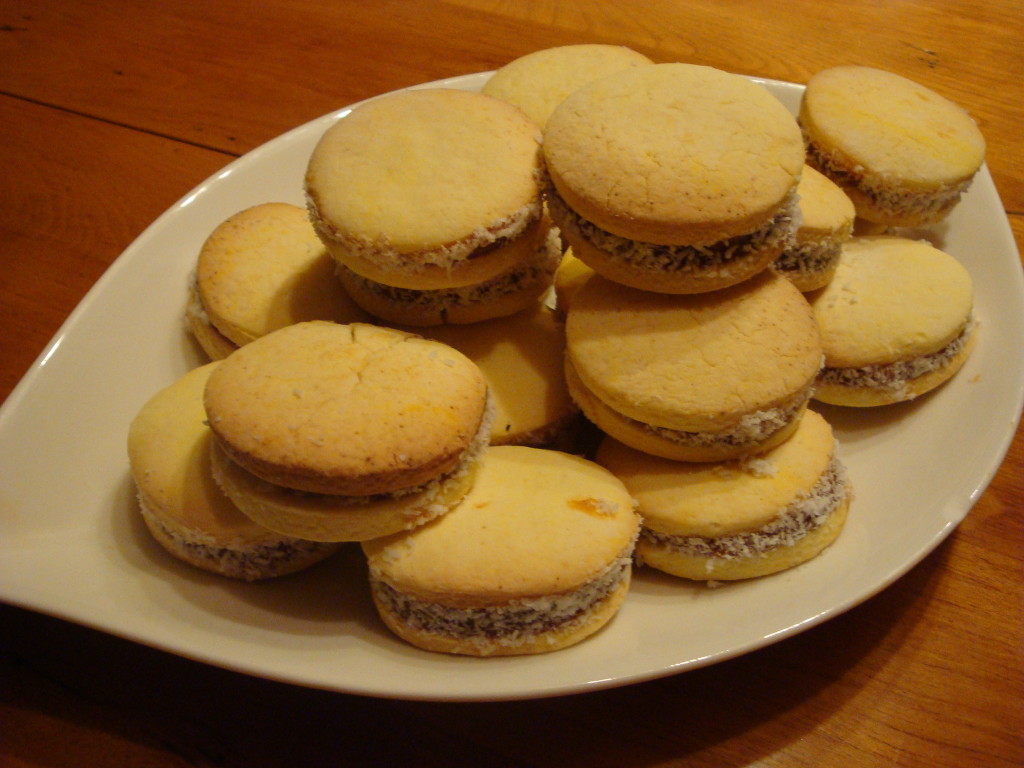On Sunday supplement
Food and Wine
“Come on, throw us a bone.” Finally, proof that someone besides the editor has read my columns over the last few months. I was sitting in a restaurant, minding my own business, and someone walked up to me and asked if I was the guy from SaltShaker who also writes the weekly recipe for the Buenos Aires Herald. Seeing no escape, and anyway being pleased that someone actually knew about this column, I said yes. And he said, “You’re doing all these recipes to lighten things up, how about something for those of us who have to eat gluten-free?”
The G word. The latest fad to strike the diet world. Which is not to say that there is not Celiac’s disease, there is. There are also wheat allergies, which is a whole different thing unrelated to gluten. There are also, dare one suggest it, camp followers. Let’s get all scientific for a moment. Gluten is a composite of two proteins that are found in the seeds of certain grasses, particularly wheat, rye and barley. It is a protein that a good number of people have trouble digesting – symptomatically, around 1 in 1700 people have active Celiac’s disease – and the only treatment is a gluten-free diet.
But, there are all these newfangled screening tests out there, and a whopping 1 in 105 people can show a predisposition, i.e., the genetic markers to develop it. And a whole lot of those folk have decided better safe than sorry, sometimes with, and sometimes without medical recommendation. Add to that the whole group of people who jump on bandwagons, with food gurus out there telling them to cleanse their lives of everything they ever enjoyed on a plate, and you get predictable results – every other person you meet seems to be “just a bit gluten intolerant”. For these folk, the only treatment is rolling your eyes, because you remember when last month they were doing a lemon juice detox.
I’ve talked with enough people who live on a gluten free diet to have gotten a good sense of what they miss – breads, pizza, pasta and pastries. That pretty much sums up most of what we’d make from the grains of gluten, and I’ve spent some time with several of them coming up with recipes that work. Tying all this in with this column’s Argentine bent, and pizza and pastries came right out on top. Since I’ve recently written up a column on pizza, we’ll hold that for a bit and hit that latter. What’s the snack treat that every visitor to Argentina gets told they must try? An alfajór, the sandwich cookie that oreos only dream of being.
Maicenas – Cornstarch Alfajores
Traditional cornstarch alfajores still contain a good amount of flour, usually 2:1 cornstarch to flour. In order to stabilize the structure you need a good flour substitute, in this case, part rice flour and part potato starch works, with a little extra baking powder for lift.
150 grams butter or margarine
100 grams confectioners sugar
2 extra large eggs
Vanilla extract
a few drops yellow food coloring (optional)
80 grams rice flour
50 grams potato starch
250 grams cornstarch
1½ teaspoons baking powder
dulce de leche or marmalade, and grated coconut
Cream butter and sugar together. Add in the eggs and combine well. Mix in the vanilla and food coloring and sift in the four dry ingredients. Mix well to make a smooth dough. Refrigerate for 20 minutes (particularly important if you use butter rather than margarine).
Roll out with a rolling pin to a 3mm (⅛”) thickness and cut into 3cm (1¼”) circles. Place on a buttered baking sheet (or non-stick). Cook 15-20 minutes in 190°C/400°F oven. Put a spoonful of dulce de leche (make sure it’s one not stabilized with flour) or marmalade on the underside of one and sandwich with a second cookie, press down lightly so that the filling very slightly bulges out, clean up edges to make it even and pretty and then roll the sides in grated coconut.
A series of recipes and articles that I started writing for the Buenos Aires Herald Sunday supplement, Food & Wine section, at the beginning of 2012. My original proposal to them was to take local favorite dishes and classics and lighten them up for modern day sensibilities. We’re not talking spa or diet recipes, but at the very least, making them healthier in content, particularly salt, fat and portion size. As time went by, that morphed into a recipe column that, while emphasizing food that is relatively “good for you”, wasn’t necessarily focused on local cuisine. At the beginning of 2013 I decided to stop writing for them over some administrative issues, but it was fun while it lasted.
